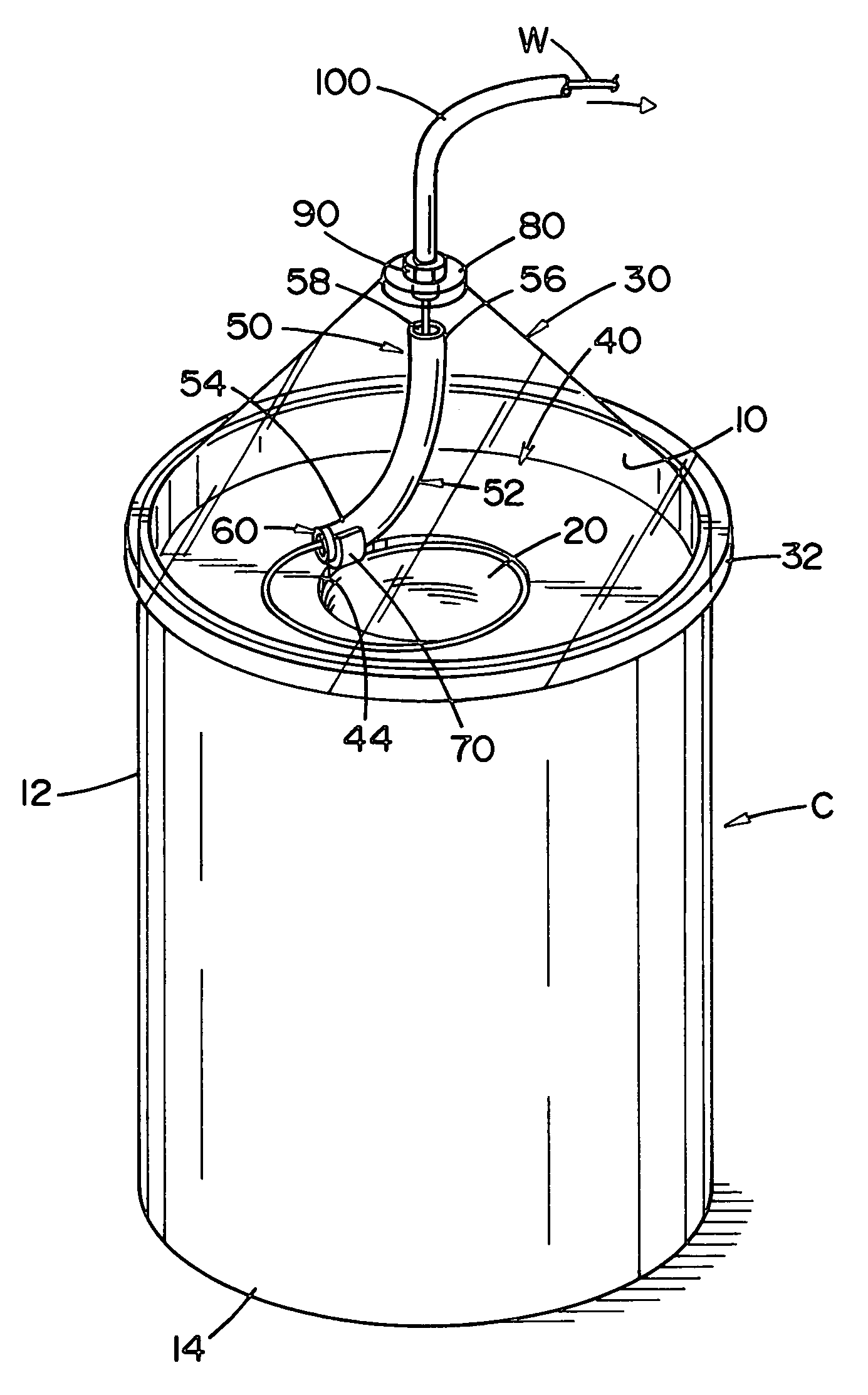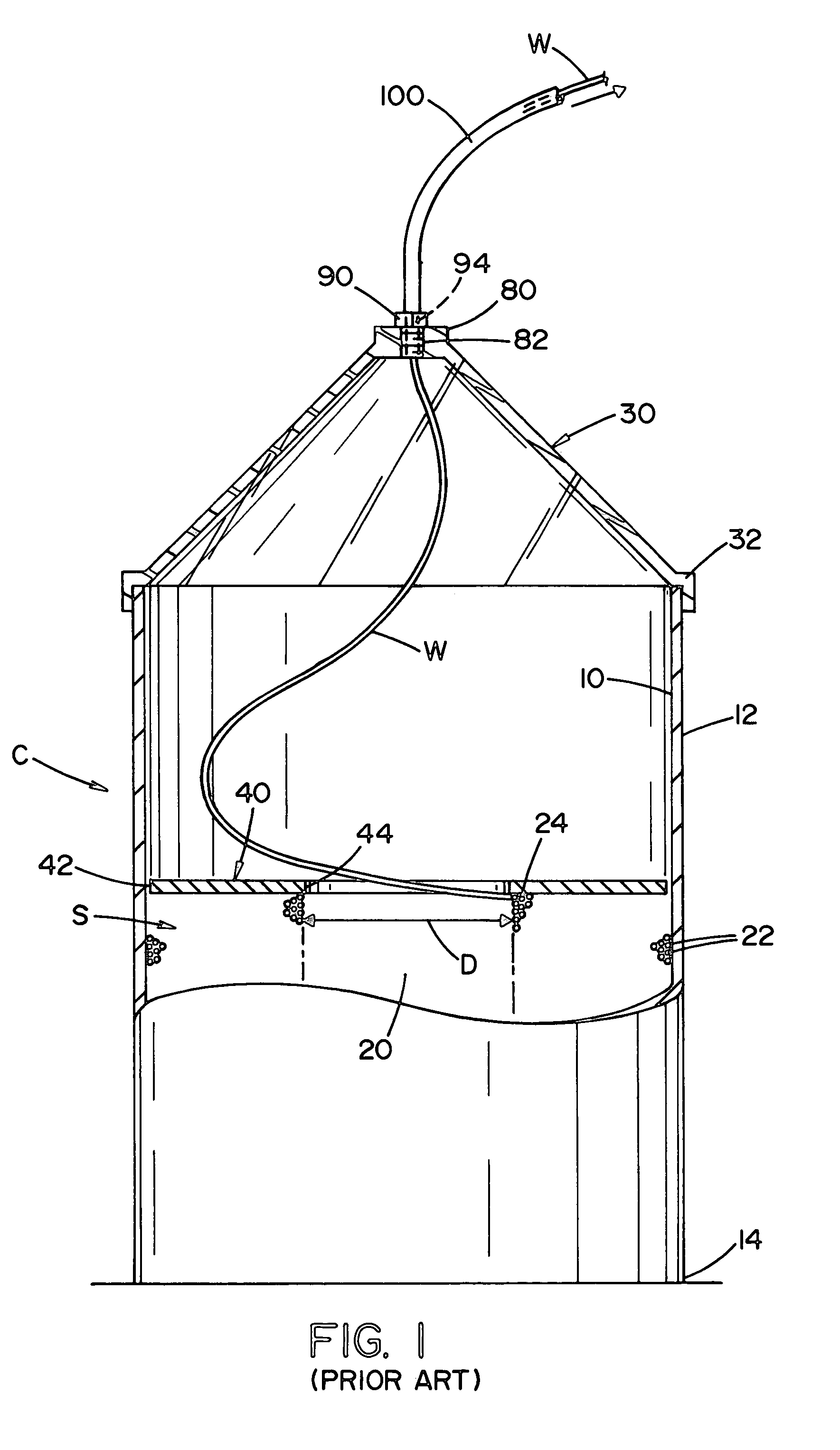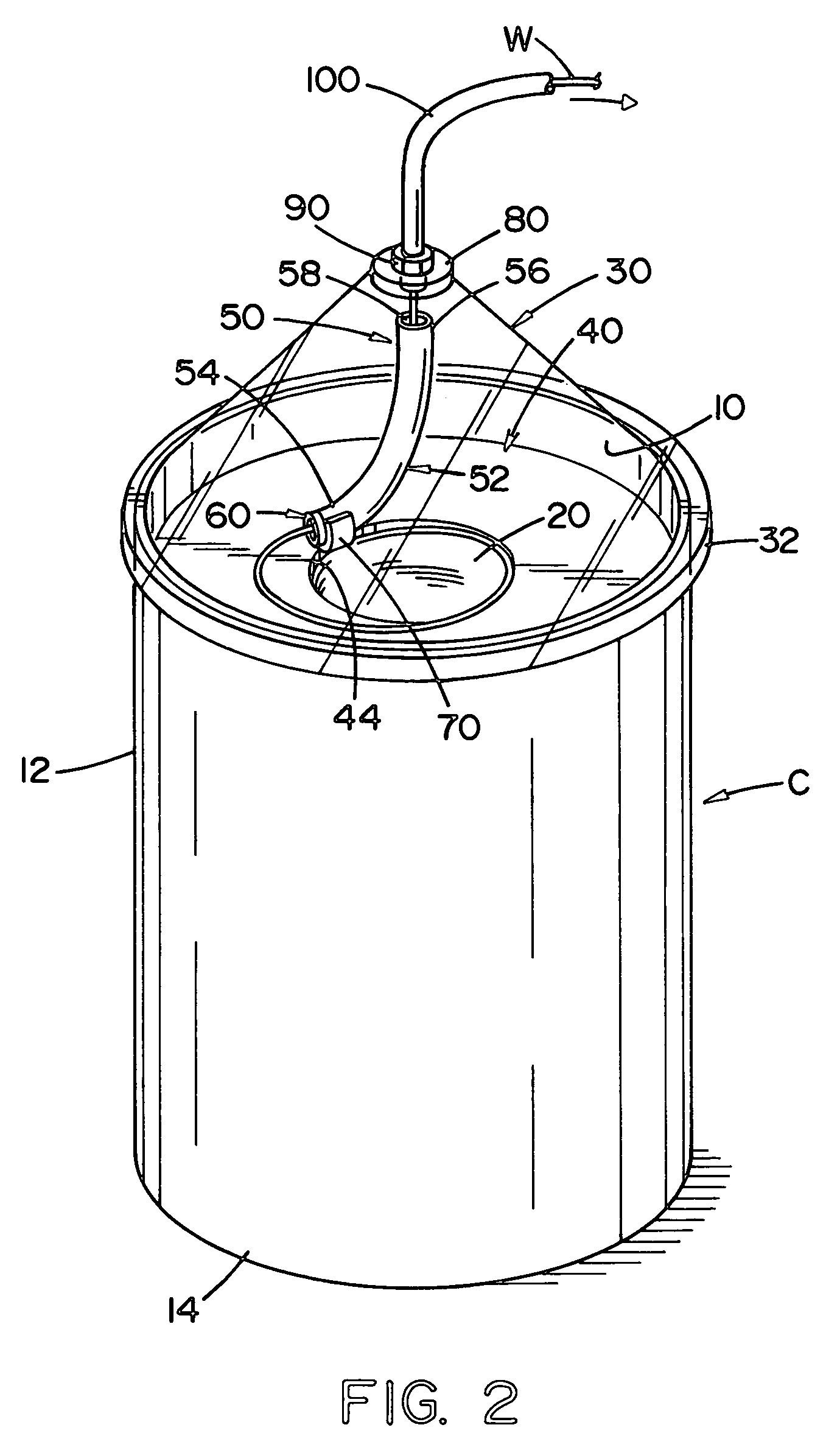Floating liner
a liner and liner technology, applied in the field of floating liner, can solve the problems of premature popping out of the wire loop, tangles of wires, and tangling of welding wires, and achieve the effect of minimizing entanglement of wires
- Summary
- Abstract
- Description
- Claims
- Application Information
AI Technical Summary
Benefits of technology
Problems solved by technology
Method used
Image
Examples
Embodiment Construction
[0058]Referring now to the preferred embodiment of the drawings, wherein the showings are for the purpose of illustrating a preferred embodiment of the invention only and not for the purpose of limiting the invention,
[0059]FIG. 1 illustrates a prior art container C used in dispensing a no-twist welding wire for automatic and / or semiautomatic welding. The container includes a standard drum, hereinafter referred to as the container, which container may be formed of cardboard or other materials and has an interior wall 10, and outer wall 12, and a base 14. Within the container is stored a large volume of welding wire in the form of a wire stack or coils S having an internal cavity 20 with an internal diameter D. The wire stack or coils wire is formed from several convolutions or layers 22 of no-twist wire. The upper portion of the wire stack or coils includes generally flat top surface layers 22 of welding wire. As the welding wire is withdrawn from wire stack or coils S, it first come...
PUM
| Property | Measurement | Unit |
|---|---|---|
| weight distribution | aaaaa | aaaaa |
| length | aaaaa | aaaaa |
| inner diameter | aaaaa | aaaaa |
Abstract
Description
Claims
Application Information
 Login to View More
Login to View More - R&D
- Intellectual Property
- Life Sciences
- Materials
- Tech Scout
- Unparalleled Data Quality
- Higher Quality Content
- 60% Fewer Hallucinations
Browse by: Latest US Patents, China's latest patents, Technical Efficacy Thesaurus, Application Domain, Technology Topic, Popular Technical Reports.
© 2025 PatSnap. All rights reserved.Legal|Privacy policy|Modern Slavery Act Transparency Statement|Sitemap|About US| Contact US: help@patsnap.com



